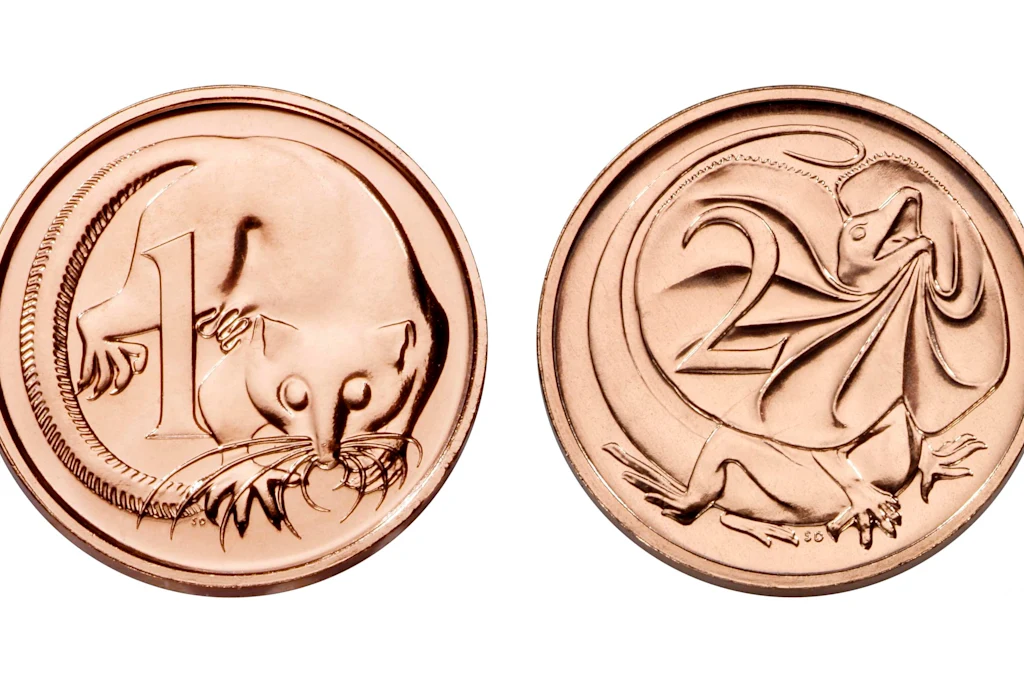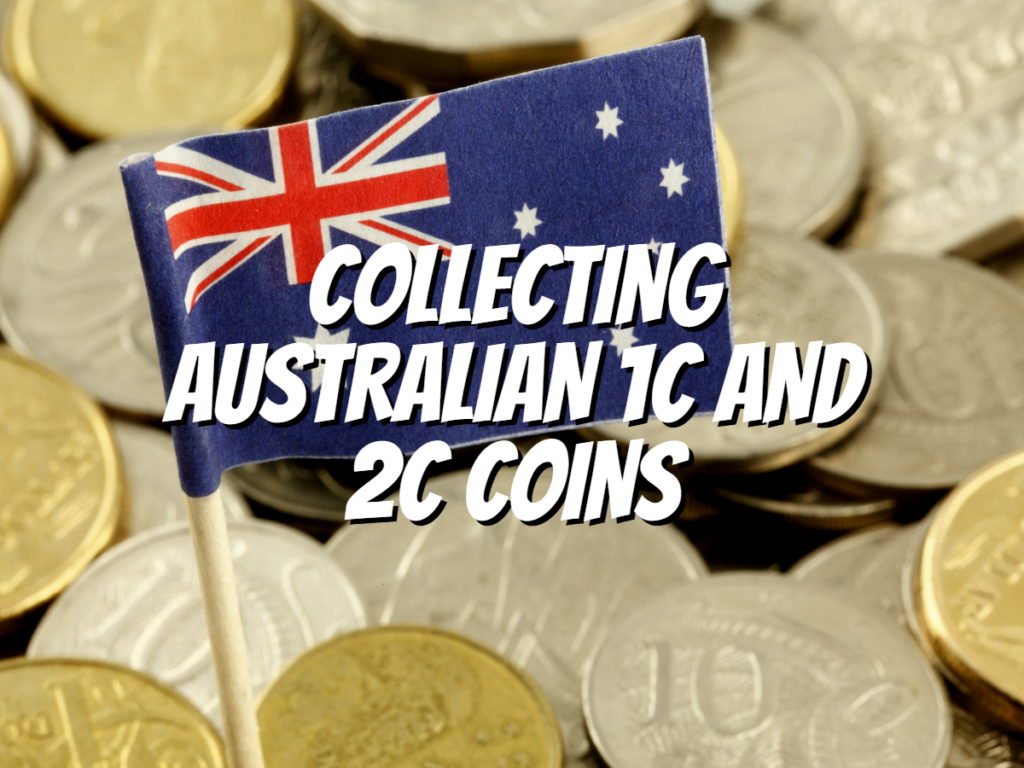Greetings, esteemed coin enthusiast! Australia has a long history of producing 1c and 2c coins.
Discover the ultimate guide to acquiring Australian 1c & 2c coins and their present-day market worth in this informative article.
Discover the answers to frequently asked questions, including “Do they retain their legal tender status?” and beyond!
Australian 1c and 2c Coins
History of Australian 1c Coin
Did you know the first issue of the Australian 1c Coin was in 1966 and had three Mints producing it?
The Royal Australian Mint in Canberra made 146.5 million, the Melbourne Mint made 239 million, and the Perth Mint made 26.6 million.
All one-cent coins, except those from 1966 and 1981, were made at the Canberra mint. According to my research, in 1981, they struck 40.3 million coins at the British Royal Mint in Llantrisant, Wales, and 183.6 million coins in Canberra.
The only year when it was not minted during its years in general circulation was 1986. The last time it was minted was in 1990.
History of Australian 2c Coin
The Australian 2c coin was introduced into circulation on February 14th, 1966. Like the 1c coin, this coin was made at three different Mints.
The Royal Australian Mint in Canberra made 145.2 million, the Melbourne Mint made 66.6 million, and the Perth Mint made 217.7 million.
In 1981, Australian coins were minted outside the country for the first time. Around 70.8 million coins were struck at the British Royal Mint in Llantrisant, Wales, while 97.4 million and 81.8 million coins were produced in Canberra and Perth, respectively.
The 2c coin was only minted for coin sets in the following years: 1986, 1987, 1990, 1991, and finally, 2006. So 2c coins were produced in 1986 and 1987 (for collector sets), and the last year they were minted was actually 2006, not 1989.
Composition

Australian 1c and 2c coins consisted of 97% copper, 2.5% zinc, and 0.5% tin. This is a bronze alloy, not copper-plated zinc. The 1-cent piece is composed of a bronze alloy of 97 percent copper, 2.5 percent zinc, and 0.5 percent tin.
When did 1c & 2c Coins Stop in Australia?
Australian 1c and 2c coins were first introduced on February 14, 1966, with Australia’s decimalization.
The 1c coin was last minted in 1990, and the 2c coin was last minted in 1991 for circulation. Both coins were withdrawn from circulation in February 1992, but remain legal tender today.
Are They Still Legal Tender Today?

While 1c and 2c coins are not widely used in everyday transactions, they remain legal tender.
The Treasurer announced the cessation of issue of one and two-cent coins in his Budget Speech of 21 August 1990. Both coins were withdrawn from circulation commencing in February 1992. The government already completed these actions over 30 years ago.
However, there is a growing movement to reintroduce the 1c coin into our daily lives and eliminate plastic bank cards.
In Australia today, you can use an older-style 1c or 2c coin to pay for parking at a meter by inserting it into a machine similar to those found in supermarkets (these machines dispense cardboard tickets that must be displayed on windshields).
You can also use these coins to make phone calls if you don’t have any other change handy—a few people still do this!
They’re also helpful when paying for bus fares, as many bus drivers will accept large and small denominations of Australian currency without comment.
However, they’ll likely request new notes rather than giving change back if you only have smaller denominations!
Are They Worthy of Collecting?
If you’re starting a coin collection, Australian 1c and 2c coins are a great way to get started.
They’re easy to store and carry around, so they can be carried in your pocket or purse without weighing you down.
And they have attractive designs, stories behind them, and other features that make them fun collectibles.
You can collect these coins in a coin album for easy storage and display.
This will allow you to keep track of their values and look at their beautiful designs whenever possible!
In addition, you may browse your album with friends or family because it’s so much fun!
Collecting Australian coins is a passion that many people share. They can be fun and rewarding for both children and adults alike!
But before you go out there and start collecting, it’s essential to understand the history behind each coin and what makes them unique in the first place.
Before you go…
This article covered everything from their composition to when they stopped being legal tender today – so now it’s time for you to get started on your collection!
Check out my next article: “10 of the Best Australian Coins To Collect!“
Related Articles:

